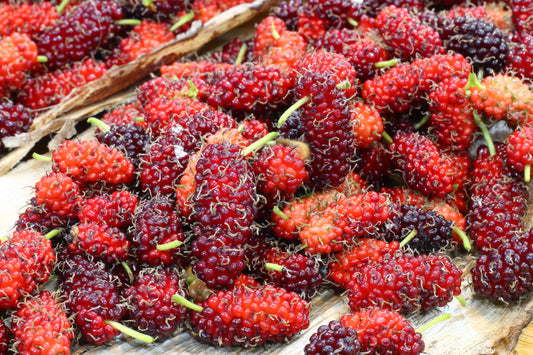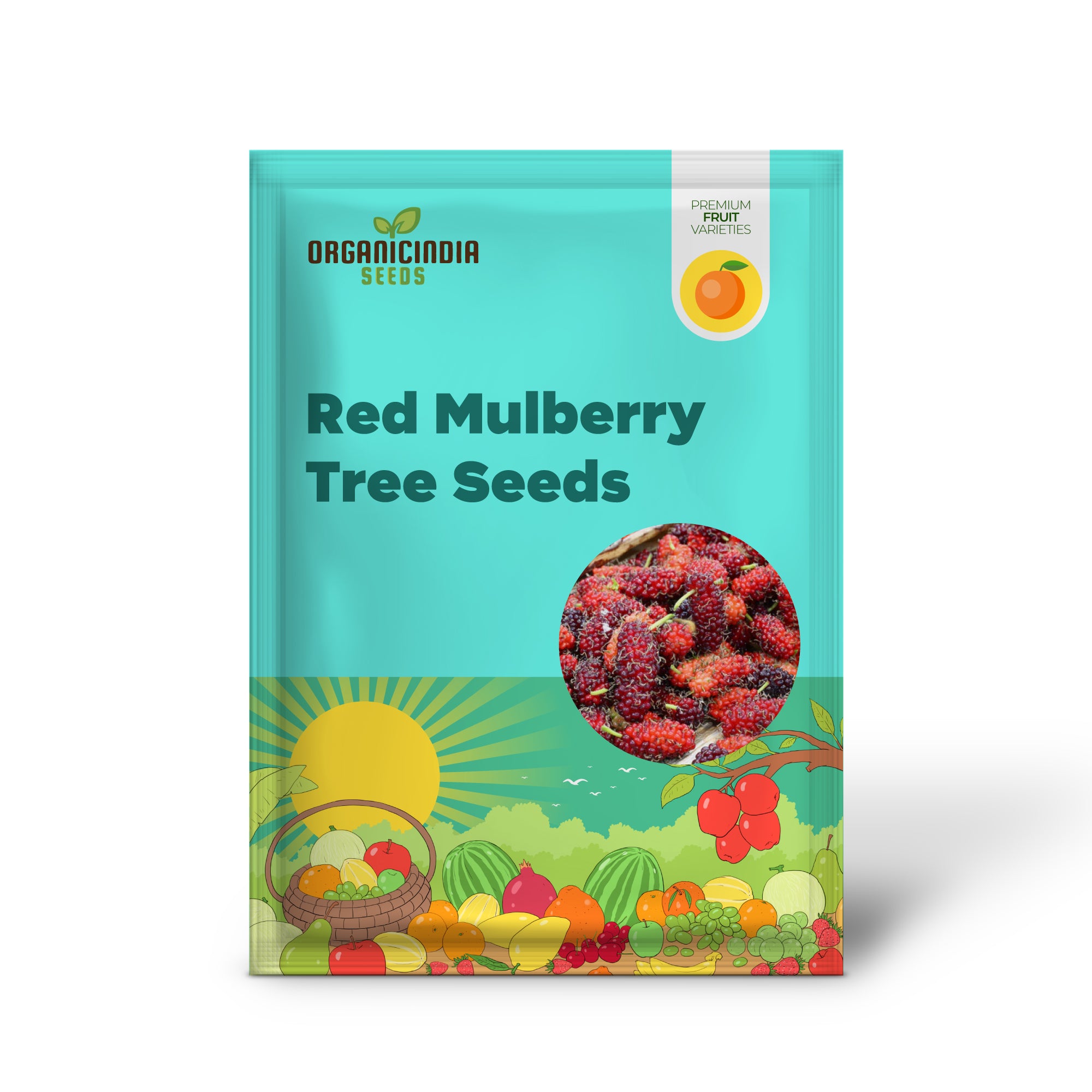



Free Shipping
Safe & Secure Payments
The Red Mulberry (Morus rubra) is a hardy, deciduous tree or shrub native to North America. Known for its unique sweet, dark purple to black fruit and vibrant foliage, the Red Mulberry is a versatile plant that can be used in a variety of landscaping applications. The fruit of the Mulberry tree is highly nutritious and can be eaten fresh, dried, or used in a variety of culinary preparations, including jams, pies, and wines. Red Mulberries are not only beneficial for human consumption, but they also serve as a food source for birds and other wildlife. With its attractive form, rich fruit production, and low-maintenance care, the Red Mulberry is a great addition to both edible and ornamental gardens.
Key Features:
Growing Information:
Light:
Red Mulberry trees prefer full sun but can tolerate partial shade. For optimal fruit production and robust growth, plant them in a location that receives at least 6-8 hours of direct sunlight each day.
Soil:
Red Mulberries are highly adaptable and can grow in a variety of soil types, including loamy, sandy, and clay soils. They prefer well-draining soil with a slightly acidic to neutral pH but will tolerate a wide range of soil conditions. Ensure the soil is not too soggy or waterlogged to prevent root rot.
Planting Tips:
Start by soaking the seeds in water for 24 hours to soften the seed coat, which can help improve germination. Then, stratify the seeds by placing them in a moist medium (such as sand or vermiculite) and refrigerating them for 30-60 days. After stratification, sow the seeds in a well-draining seed-starting mix, covering them lightly with soil. Keep the soil consistently moist and place the containers in a warm spot (around 65-75°F or 18-24°C) to encourage germination, which usually takes 3-6 weeks. Once the seedlings are strong enough, transplant them outdoors in a sunny spot with well-draining soil. Space plants about 10-15 feet apart, as they can grow into large shrubs or small trees.
Watering:
Red Mulberries are drought-tolerant once established but will perform best with regular watering, especially during dry spells. Water deeply to ensure the roots receive adequate moisture. Be sure to avoid waterlogging, as the plant prefers well-drained soil.
Benefits:
Growing Zones:
The Red Mulberry is hardy in USDA Zones 4-9, making it suitable for a wide range of climates across North America, from cold northern regions to warmer southern areas. It is tolerant of both hot summers and cold winters.
How to Use in the Garden:
Conclusion:
The Red Mulberry (Morus rubra) is a versatile and rewarding tree or shrub that offers multiple benefits, from its sweet, dark fruit to its attractive, low-maintenance growth. It thrives in a variety of growing conditions and provides year-round interest, from its white spring flowers to its summer fruit and beautiful fall color. Whether you're looking to create an edible garden, support local wildlife, or enhance your landscape with a hardy, productive tree, the Red Mulberry is an excellent choice. Its delicious fruit and ease of care make it an ideal addition to any garden or orchard.
Choose options

